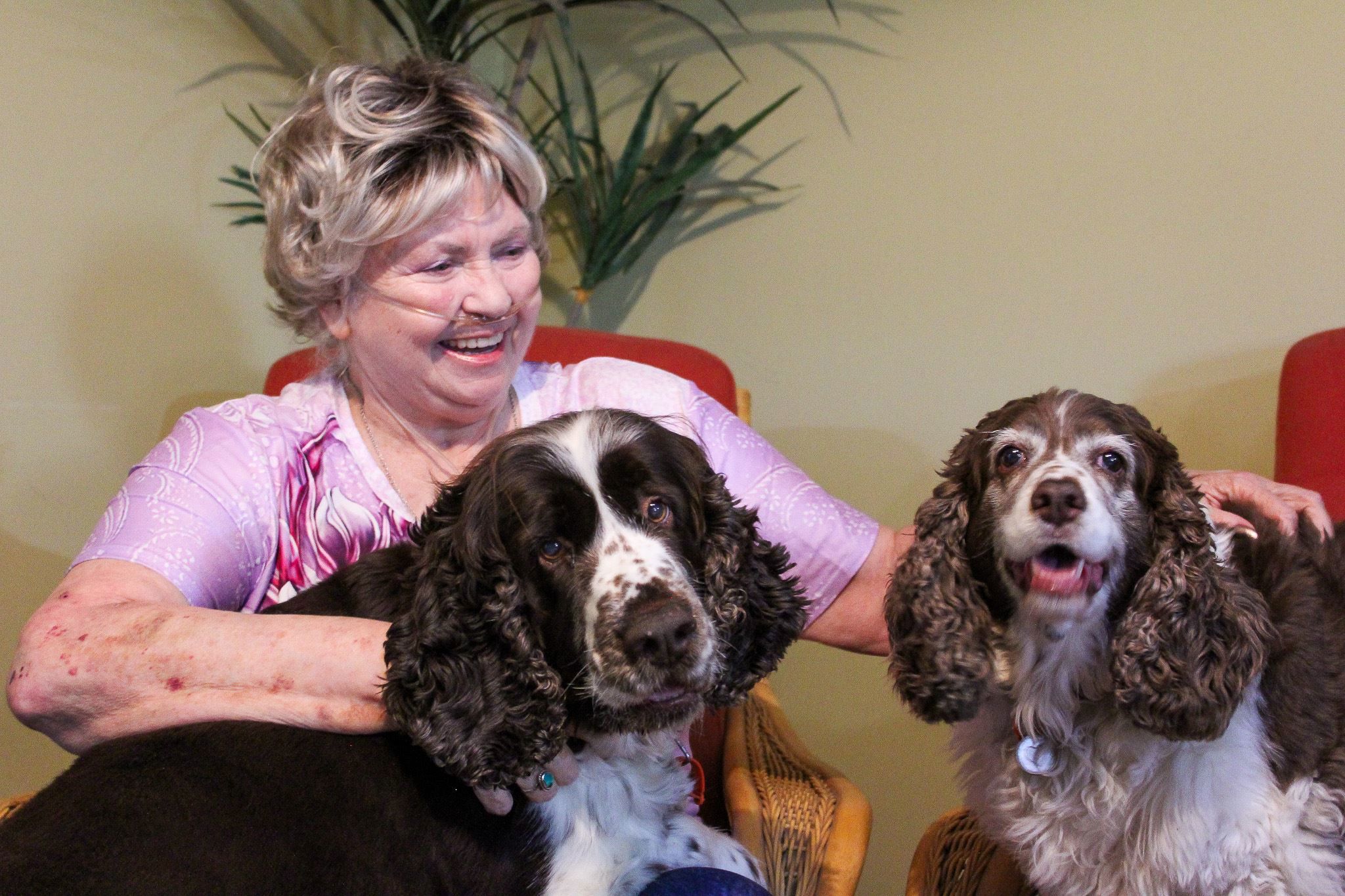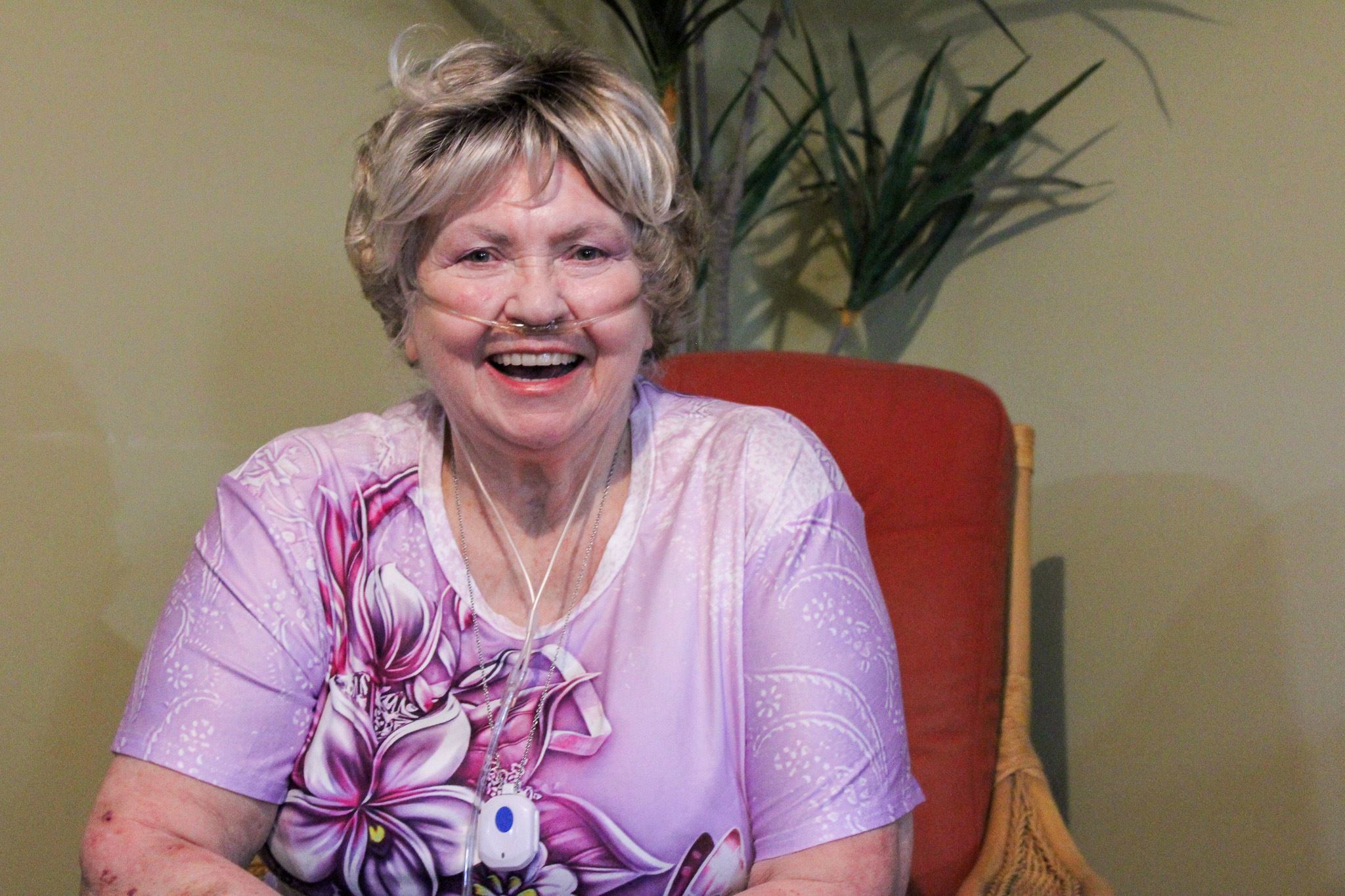
Coming home after an extended stay in hospital can be daunting, especially when you still need help with everyday things like showering and getting dressed.
Rockingham’s Mary Lewis found herself in that vulnerable position when she was discharged from hospital after four months.
In a series of traumatic events, Mary had broken her arm in a fall then contracted double pneumonia followed by Covid-19. She spent 28 days in ICU and was left with permanent scarring on her lungs, which means she now relies on daily oxygen therapy.
“It was very scary coming home because I couldn’t do very much for myself and I was worried about having another fall,” she remembers “But the Brightwater coordinator came to my home within hours of my discharge and she set up the pendant alarm to make me feel safe.”
Before leaving hospital, Mary had registered for Brightwater At Home’s Transition Care Program which provides therapy and support services in the home setting. Brightwater At Home Service Leader, Meredith Polglaze says an important part of the program is to help people feel they’re not alone.
“When you're in hospital, you've got people constantly looking after you and doing things for you. When you come home, there can be fear around how you are going to do it by yourself. The presence of our staff is very reassuring,” she says.
Setting goals for a better recovery.
The Transition Care Program (TCP) is subsidised by the state and federal governments with the aim of giving older people short-term support to continue their recovery after they leave hospital.
Some people undertake the transition program in temporary accommodation but many others, like Mary Lewis, are able to go back home where they get the services and therapies they need to regain as much independence as possible.
Meredith Polglaze says Brightwater At Home’s transition care team uses a goal setting approach to set up the appropriate services for each person’s individual situation.
“We ask our clients what they'd like to achieve and then we work to help them get there,” she says. “For example, if they have been in hospital after a fall, they may be on a walking frame right now, but their goal is to get a walking stick and walk to the shops 200 metres down the road. So we work with them to make them stronger, get fitter, improve their balance, improve their confidence, so they can get to the point where they return to walking down to the shops and completing their shopping by themselves.”
Mary’s goal was the team’s goal.
Mary had no doubt what her goal was for the 12 weeks of transitional care: she wanted to be able to walk her ten year old English Springer Spaniel, Chillay. When she first got home, it seemed an impossible task. She had been severely weakened by her time in hospital, and was now reliant on permanent oxygen with limited use of her left arm.
But Mary was determined and so was her Brightwater At Home team of physiotherapists, occupational therapists, dieticians and support workers.
“We worked on different techniques and goals to get back up to strength. We were working really hard to get the conditioning and the stamina and endurance back,” she says.
Success came with small milestones, like putting on a load of laundry or fixing a bowl of cereal with one hand. And finally, she was able to take Chillay for that walk.
“It was just up and down the driveway but I did it!” she says proudly.

Coming home after an extended stay in hospital can be daunting, especially when you still need help with everyday things like showering and getting dressed.
Rockingham’s Mary Lewis found herself in that vulnerable position when she was discharged from hospital after four months.
In a series of traumatic events, Mary had broken her arm in a fall then contracted double pneumonia followed by Covid-19. She spent 28 days in ICU and was left with permanent scarring on her lungs, which means she now relies on daily oxygen therapy.
“It was very scary coming home because I couldn’t do very much for myself and I was worried about having another fall,” she remembers “But the Brightwater coordinator came to my home within hours of my discharge and she set up the pendant alarm to make me feel safe.”
Before leaving hospital, Mary had registered for Brightwater At Home’s Transition Care Program which provides therapy and support services in the home setting. Brightwater At Home Service Leader, Meredith Polglaze says an important part of the program is to help people feel they’re not alone.
“When you're in hospital, you've got people constantly looking after you and doing things for you. When you come home, there can be fear around how you are going to do it by yourself. The presence of our staff is very reassuring,” she says.
Setting goals for a better recovery.
The Transition Care Program (TCP) is subsidised by the state and federal governments with the aim of giving older people short-term support to continue their recovery after they leave hospital.
Some people undertake the transition program in temporary accommodation but many others, like Mary Lewis, are able to go back home where they get the services and therapies they need to regain as much independence as possible.
Meredith Polglaze says Brightwater At Home’s transition care team uses a goal setting approach to set up the appropriate services for each person’s individual situation.
“We ask our clients what they'd like to achieve and then we work to help them get there,” she says. “For example, if they have been in hospital after a fall, they may be on a walking frame right now, but their goal is to get a walking stick and walk to the shops 200 metres down the road. So we work with them to make them stronger, get fitter, improve their balance, improve their confidence, so they can get to the point where they return to walking down to the shops and completing their shopping by themselves.”
Mary’s goal was the team’s goal.
Mary had no doubt what her goal was for the 12 weeks of transitional care: she wanted to be able to walk her ten year old English Springer Spaniel, Chillay. When she first got home, it seemed an impossible task. She had been severely weakened by her time in hospital, and was now reliant on permanent oxygen with limited use of her left arm.
But Mary was determined and so was her Brightwater At Home team of physiotherapists, occupational therapists, dieticians and support workers.
“We worked on different techniques and goals to get back up to strength. We were working really hard to get the conditioning and the stamina and endurance back,” she says.
Success came with small milestones, like putting on a load of laundry or fixing a bowl of cereal with one hand. And finally, she was able to take Chillay for that walk.
“It was just up and down the driveway but I did it!” she says proudly.



